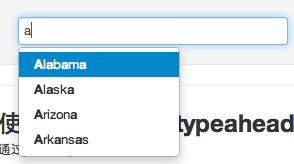var http = require('http');
var setting = require('./setting.js');
var mime = require('./mime');
var url = require('url');
var util = require('util');
var path = require('path');
var fs = require('fs');
var zlib = require('zlib');
//访问统计
var number = 0;
var accesses = {};
http.createServer(function(req, res){
res.number = ++number;
accesses[res.number] = {startTime : new Date().getTime()};
var pathname = url.parse(req.url).pathname;
//安全问题,禁止父路径
pathname = pathname.replace(/\.\./g, '');
var realPath = setting.webroot + pathname;
accesses[res.number].path = pathname;
readPath(req, res, realPath, pathname);
}).listen(8000);
console.log('http server start at parth 8000\n\n\n');
//判断文件是否存在
function readPath(req, res, realPath, pathname){
//首先判断所请求的资源是否存在
path.exists(realPath, function(ex){
console.log('path.exists--%s', ex);
if(!ex){
responseWrite(res, 404, {'Content-Type' : 'text/plain'},
'This request URL ' + pathname + ' was not found on this server.');
}else{
//文件类型
fs.stat(realPath, function(err, stat){
if(err){
responseWrite(res, 500, err);
}else{
//目录
if(stat.isDirectory()){
//是否读取目录
if(setting.viewdir){
fs.readdir(realPath, function(err, files){
if(err){
responseWrite(res, 500, err);
}else{
var htm = '<html><head><title>' + pathname + '</title></head><body>' + pathname + '<hr>';
for(var i = 0; i < files.length; i++){
htm += '<br><a href="' + pathname + (pathname.slice(-1) != '/' ? '/' : '')
+ files[i] + '">' + files[i] + '</a>', 'utf8';
}
responseWrite(res, 200, {'Content-Type' : 'text/html'}, htm);
}
});
}else if(setting.index && realPath.indexOf(setting.index) < 0){
readPath(req, res, path.join(realPath, '/', setting.index), path.join(pathname, '/', setting.index));
}else{
responseWrite(res, 404, {'Content-Type' : 'text/plain'},
'This request URL ' + pathname + ' was not found on this server.');
}
}else{
var type = path.extname(realPath);
type = type ? type.slice(1) : 'nuknown';
var header = {'Content-Type' : mime[type] || 'text/plain'};
//缓存支持
if(setting.expires && setting.expires.filematch
&& type.match(setting.expires.filematch)){
var expires = new Date(),
maxAge = setting.expires.maxAge || 3600 * 30;
expires.setTime(expires.getTime() + maxAge * 1000);
header['Expires'] = expires.toUTCString();
header['Cache-Control'] = 'max-age=' + maxAge;
var lastModified = stat.mtime.toUTCString();
header['Last-Modified'] = lastModified;
//判断是否304
if(req.headers['if-modified-since'] && lastModified == req.headers['if-modified-since']){
responseWrite(res, 304, 'Not Modified');
}else{
readFile(req, res, realPath, header, type);
}
}else{
readFile(req, res, realPath, header, type);
}
}
}
});
}
});
}
//读文件/压缩/输出
function readFile(req, res, realPath, header, type){
var raw = fs.createReadStream(realPath), cFun;
//是否gzip
if(setting.compress && setting.compress.match
&& type.match(setting.compress.match) && req.headers['accept-encoding']){
if(req.headers['accept-encoding'].match(/\bgzip\b/)){
header['Content-Encoding'] = 'gzip';
cFun = 'createGzip';
}else if(req.headers['accept-encoding'].match(/\bdeflate\b/)){
header['Content-Encoding'] = 'deflate';
cFun = 'createDeflate';
}
}
res.writeHead(200, header);
if(cFun){
raw.pipe(zlib[cFun]()).pipe(res);
}else{
raw.pipe(res);
}
}
//普通输出
function responseWrite(res, starus, header, output, encoding){
encoding = encoding || 'utf8';
res.writeHead(starus, header);
if(output){
res.write(output, encoding);
}
res.end();
accesses[res.number].endTime = new Date().getTime();
//日志输出
console.log('access[%s]--%s--%s--%s--%s\n\n', res.number, accesses[res.number].path,
(accesses[res.number].endTime - accesses[res.number].startTime),
starus, (output ? output.length : 0));
delete accesses[res.number];
} |










 关于本站
关于本站